Premium Only Content
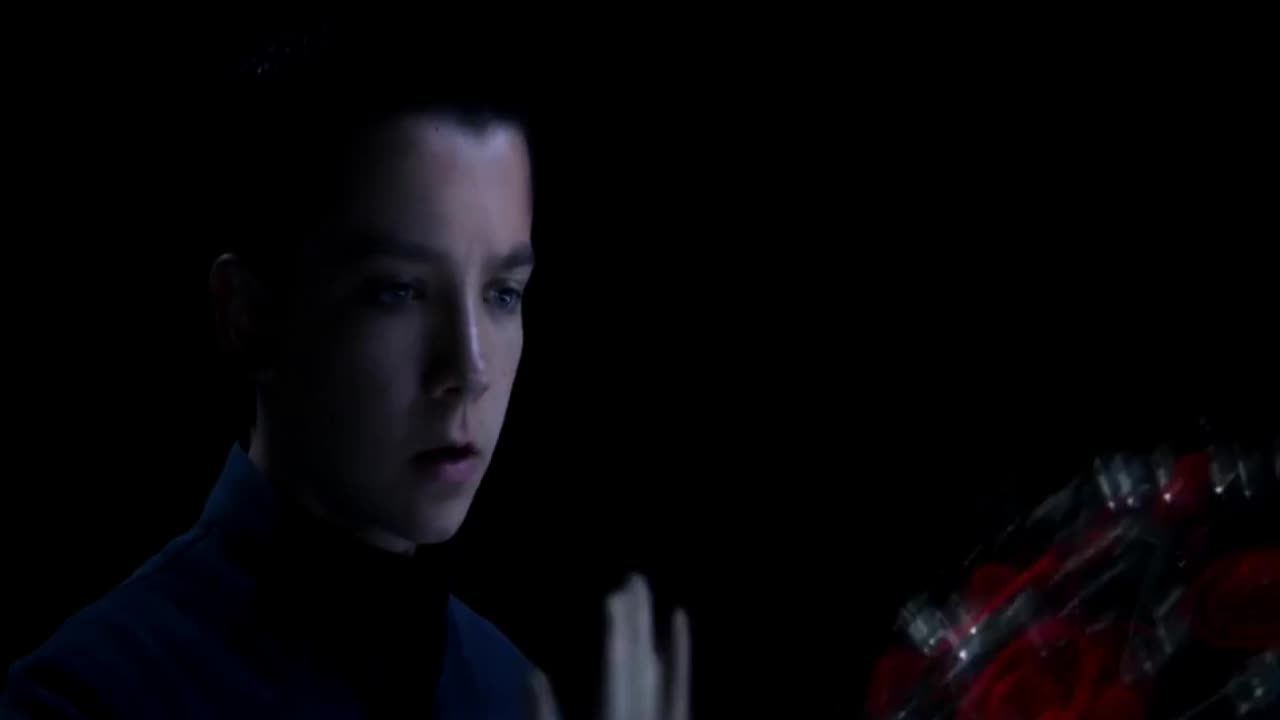
Burnin For You Dont Fear The Reaper Blue Oyster Cult
Burnin For You Album: Fire Of Unknown Origin (1981)
Don't Fear The Reaper Album: Agents of Fortune (1976)
by Blue Öyster Cult
Lead guitarist Don "Buck Dharma" Roeser wrote Burnin For You with Richard Meltzer, a rock writer who often contributed lyrics to the band. Dharma initially planned to release this song on his solo album, Flat Out, but was later convinced to include it on Blue Öyster Cult's Fire Of Unknown Origin. Dharma sang lead, as he did on many of BÖC's songs.
In an interview with Dharma, he said: "'Burnin' for You' is a Richard Meltzer lyric that probably has the most sincere sentiment from my view. I wrote the music to that, because I thought I could do a good job... and I guess I did."
When Richard Meltzer wrote the lyrics, he titled the song "Burn Out The Night," a reference to an evening of rock and roll. Blue Öyster Cult had a "band house" where their band members and associates (including their manager, Sandy Pearlman) would bring in song ideas and lyrics.
Joe Bouchard, who was their bass player at the time, told the metal magazine Chips & Beer that he and Buck Dharma came across Meltzer's lyrics at the same time, and each wrote their own song around it. Dharma's version, with the title changed to "Burnin' For You," was the one that got recorded.
Along with Black Sabbath, Blue Öyster Cult was one of the first heavy metal bands. They issued their first album in 1972 and grew a modest following before scoring a hit with "(Don't Fear) The Reaper" (also written by Buck Dharma) from their 1976 album Agents of Fortune, which hit #12 and became embedded on rock playlists.
Their next (and last) Top 40 hit came with "Burnin' For You," which was a #1 hit on Billboard's Mainstream Rock chart.
In the book MTV Ruled the World - The Early Years of Music Video, frontman Eric Bloom tells the story of the "Burnin' For You" video: "We went out to California, and our management found a video company, and we did two videos in 24 hours - 'Burnin' For You' and 'Joan Crawford.' MTV wouldn't show the 'Joan Crawford' video, because there was something about it that was too racy for them. But 'Burnin' For You' got a ton of airplay on MTV in 1981 and 1982. We made it in the storm drains of LA. If anyone has seen the movie about giant ants, called Them!, with James Whitmore, it was filmed in the same place." Later he adds: "We thought the car on fire was very Hollywood, very cool. They had to have a Hollywood film/pyro guy there, who was licensed to burn s--t up. He had propane tanks, and he had to have a hunk of car to burn."
These videos were directed by Richard Casey, who directed the 1985 movie Horror House on Highway Five.
The first eight lines of this song all contain the word "home," which makes up the first verse:
Home in the valley
Home in the city
Home isn't pretty
Ain't no home for me
Home in the darkness
Home on the highway
Home isn't my way
Home will never be
Later, the theme switches to "time," which appears in every line of the second verse:
Time is the essence
Time is the season
Time ain't no reason
Got no time to slow
Time everlasting
Time to play B-sides
Time ain't on my side
Time I'll never know
These verses both build into a fiery chorus, where Dharma is "living for giving the devil his due."
You can tell this song was written in part by a rock writer from the line, "Time to play B-sides," which back in the days of 45 RPM vinyl records were the tracks that came on the flip sides of the hits. These were often junk, but sometimes gems. Music writers loved looking for these.
Blue Öyster Cult was one of the few American rock bands that was making videos when MTV launched in 1981. The single was released in July that year, and when MTV went on the air on August 1, they were happy to put it in rotation since they wanted to push a rock format but had little to choose from. Thanks to exposure on the network, the song rose up the charts, reaching #40 in October.
Blue Öyster Cult, who didn't even appear on their first four album covers, were not destined to be video stars. The videos they made for their 1983 follow-up album The Revölution by Night - "Shooting Shark" and "Take Me Away" - were ignored by the network, which had become enamored with more visually intriguing bands.
"(Don't Fear) The Reaper" was written and sung by Blue Öyster Cult's lead guitarist, Donald Roeser, also known as Buck Dharma. It was rumored to be about suicide, but it actually deals with the inevitability of death and the belief that we should not fear it. When Dharma wrote it, he was thinking about what would happen if he died at a young age and if he would be reunited with loved ones in the afterlife.
Dharma was diagnosed with an irregular heartbeat, which got him thinking about his mortality and inspired the song. "I thought I was going to maybe not live that long," he said in an interview. "I had been diagnosed with a heart condition, and your mind starts running away with you - especially when you're young-ish. So, that's why I wrote (Don't Fear The Reaper). It's imagining you can survive death in terms of your spirit. Your spirit will prevail."
Buck Dharma described Don't Fear The Reaper as "a love song where the love transcends the actual physical existence of the partners." He was taken aback when he learned that many listeners heard it as a song encouraging suicide; it advocates courage in the face of death but in no way suggests we should actively bring it about. In an interview, he explained: "It's not about suicide, although people kind of get that from the Romeo and Juliet reference. But BÖC's lyrics have always been... not obtuse, but deep. They're certainly open to interpretation, and everybody seems to have their own thoughts about what stuff means. We purposely let people do that - draw their own conclusions from the lyric."
Blue Öyster Cult was considered a "cult" band, somewhere in the realm of heavy metal with complex and often baffling lyrics dealing with the supernatural. Those inside the cult took the time to understand that like Black Sabbath, BÖC combined outstanding musicianship with fantasy lyrics, and they weren't for everyone. Most music critics appreciated the band, and some worked for them: Their manager/producer Sandy Pearlman wrote for the music magazine Crawdaddy!, as did Richard Meltzer, who contributed some lyrics to the Cult. Patti Smith (yes, that Patti Smith) even wrote some lyrics for the band when she was better known as a music journalist than a musician (she was BÖC keyboard player Allen Lanier's girlfriend).
Signed to Columbia Records, their first three albums sold a few hundred thousand each, but with no hit singles. "Don't Fear The Reaper" changed all that. Released as the lead single from their fourth album, Agents Of Fortune, it exposed them to a much wider audience, which was good for business but bad for art. On their next album, Spectres, they felt pressure to write another hit, and the results were disappointing. "The Cult is never destined to be successful at a format," Buck Dharma said in a 1980 interview with NME. "To be a singles band you have to win the casual buyer."
Their resurgence came in 1981 with the MTV hit "Burnin' For You," but "Reaper" will always be their defining song.
Some of the lyrics were inspired by Shakespeare's Romeo And Juliet. In Shakespeare's play, Romeo swallows poison when he believes Juliet is dead. Juliet responds by taking her own life. This led many people to believe the song was about suicide, but Dharma was using Romeo and Juliet as an example of a couple who had faith that they would be together AFTER their death.
Regarding the lyric, "40,000 men and women every day," Dharma was guessing at the number of people who died every day. He underestimated: At the time, about 135,000 people died each day worldwide.
An April 8, 2000 Saturday Night Live skit with Christopher Walken made fun of the overreaching cowbell in Don't Fear The Reaper. In the skit, the band would get upset when Will Ferrell would play the bell too loud, but Walken kept calling for "more cowbell."
In the skit, Walken plays a super-producer named Bruce Dickinson, whom the band respects enough to put up with his cowbell antics. There really is a Bruce Dickinson (besides the Iron Maiden lead singer), but he didn't produce "(Don't Fear) The Reaper" - that was David Lucas, who also brought us the General Electric "we bring good things to life" and the AT&T "reach out and touch someone" jingles. Dickinson is an archivist who works on album reissues, which means gathering master tapes to ensure the best sound quality. He is credited as the reissue producer on a later version of the album, which apparently is how he was named in the sketch.
When Lucas and Dickinson both appeared on the Just My Show podcast, Lucas explained that the cowbell was his idea, as the song "needed some momentum." He grabbed a cowbell from a nearby recording studio and "just played four on the floor... not hard to do." He found out about the SNL skit when a friend instant messaged him as it was airing.
Dickinson says he's always felt a little funny about getting the producer role in the famous skit, but it has made life more interesting. Said Dickinson, "I work with Iggy Pop on a lot of stuff and a lot of times when he calls and I pick up the phone, he goes 'More cowbell!'"
Is the cowbell in this song really that loud? It depends on how you're listening to the song. On a home stereo system, it's pretty unobtrusive, but radio stations compress their signals, and when cowbell gets compressed, it pops out in the mix.
Buck Dharma is very proud of this song and has never tired of playing it over the years. And he laughed just as hard as the rest of us when SNL did their "More Cowbell" send-up. "It's really funny," Dharma told Songfacts. "The band had no idea it was coming, either. It was quite a surprise and phenomenal in its endurance and the way it's worked its way into the culture. If the cowbell has been at all an annoyance for Blue Öyster Cult, it's got to be 10 times worse for Christopher Walken! So, I'm riding that horse in the direction it's going."
Blue Öyster Cult released their last album in 2001, but continued touring with core members Buck Dharma and Eric Bloom. When Songfacts spoke with Bloom in 2016, he said he still enjoyed performing this song, but he's a little more ambivalent about the "More Cowbell" skit. "I saw it live on my TV in my house, and did not know it was going to be on, so I was more shocked than amused when it was on," he said. "I certainly see the humor after it was on. It certainly has legs - it has become part of Americana at this point. Somebody brings it up to me on a regular basis."
"(Don't Fear) The Reaper" has been used in several horror movies, including Halloween, The Frighteners and Scream. It was also used in a very non-horror capacity in the party scene of the Disney movie Miracle, which is about the US Hockey team beating the USSR at the 1980 Olympic Games.
A Long Island band, Blue Öyster Cult got very little attention in the UK until "(Don't Fear) The Reaper" was released as a single there in 1978, earning them a substantial following.
Stephen King quoted some of the lyrics to this song in the epigraph of his 1978 novel The Stand, in which 99.9% of the US population is killed by a manmade disease called "Superflu." King got one line wrong, writing "come on Mary" instead of "come on baby."
It is also used in the 1994 miniseries adaptation during a montage showing the corpses of those who had been killed by the disease.
King often quotes songs in the beginning of his books - Bruce Springsteen's "Jungleland" and Bob Dylan's "Shelter From the Storm" are also quoted in The Stand.
Blue Öyster Cult released a new version of this song on their 1994 album Cult Classics, which contains remakes of some of their most popular songs.
The Goo Goo Dolls recorded a punk rock version of Don't Fear The Reaper for their 1987 debut album with bassist Robby Takac on lead vocals. "We like to 'take the piss' out of classic songs," Takac explained. "We thought it was funny to play 'Don't Fear The Reaper' five times as fast, and cut out everything but the three-chord structure. To me, that is hilarious. But it also allowed us to work on cover songs that fit what we did. Then we 'put the piss' back in them, if we will. So instead of making fun of them, we made them our own."
Don't Fear The Reaper was used on 12 Monkeys in the season 1 episode "Divine Move." Cole, a time traveler trying to undo a deadly plague, plays it on a bar's jukebox as he and his partner discuss their next move.
The version of Don't Fear The Reaper used in the 1996 movie Scream is an acoustic cover by Gus Black that plays when Billy (Skeet Ulrich) sneaks into Sidney's (Neve Campbell) bedroom early in the film. Director Wes Craven used music in the movie to offer clues that help identify the killer. Later on, the Republica song "Drop Dead Gorgeous," about a lying but very good-looking boyfriend, plays in the party scene. Craven made a personal appeal to the band to use the song.
-
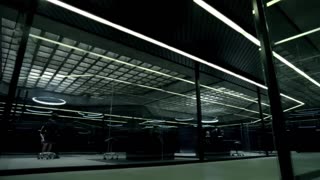 20:42
20:42
Psychological operations
7 days agoUncontrollable Urge Whip It (I Can't Get No) Satisfaction That's Good Mongoloid Beautiful World DEVO
403 -
 4:42:13
4:42:13
Due Dissidence
16 hours agoTrump Calls To "CLEAN OUT" Gaza, Swiss ARREST Pro-Palestine Journalist, MAGA's Hollywood Makeover?
59.4K79 -
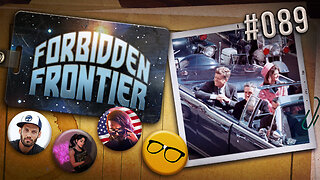 2:02:20
2:02:20
Nerdrotic
8 hours ago $18.70 earnedDECLASSIFIED: JFK, MLK UFO Immaculate Constellation Doc | Forbidden Frontier #089
81.3K16 -
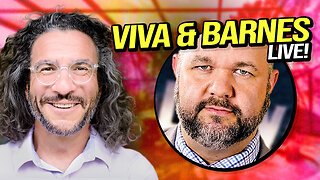 3:00:14
3:00:14
vivafrei
16 hours agoEp. 248: "Bitcoin Jesus" Begs Trump! Rekieta Gets Plea Deal! Pardons, Deportations, Bird Flu & MORE!
187K192 -
 3:44:06
3:44:06
Rising Rhino
15 hours ago $13.34 earnedWashington Commanders Vs Philadelphia Eagles: NFL NFC Championship LIVE Watch Party
87.9K4 -
 13:00
13:00
Exploring With Nug
9 hours ago $6.65 earnedHe Went To Get A Haircut And Vanished WIthout a Trace!
70.9K3 -
 18:53
18:53
DeVory Darkins
2 days ago $33.07 earnedTrump JUST ENDED Mayor Karen Bass During HEATED Meeting
100K222 -
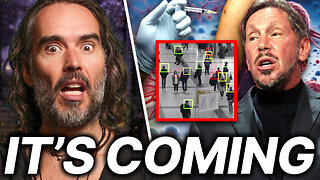 21:06
21:06
Russell Brand
13 hours agoIT'S COMING
157K497 -
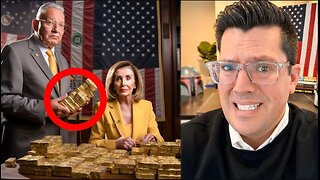 21:26
21:26
Stephen Gardner
1 day ago🔥What JUST leaked out of Congress must be STOPPED NOW!
146K285 -
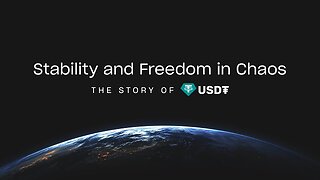 53:25
53:25
tether
11 days agoStability and Freedom in Chaos: The Story of Tether USD₮ | Tether Documentary (USDT)
152K6